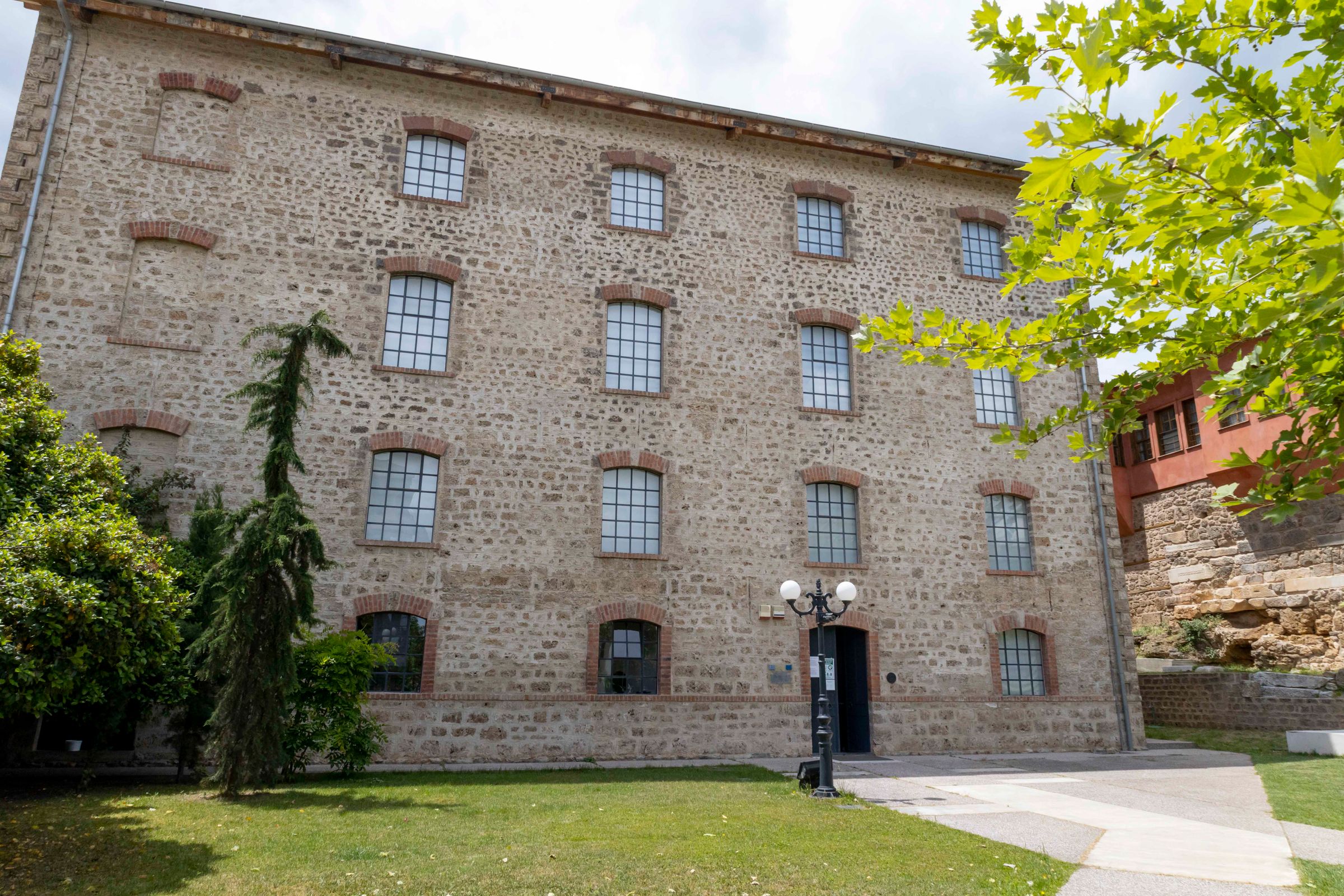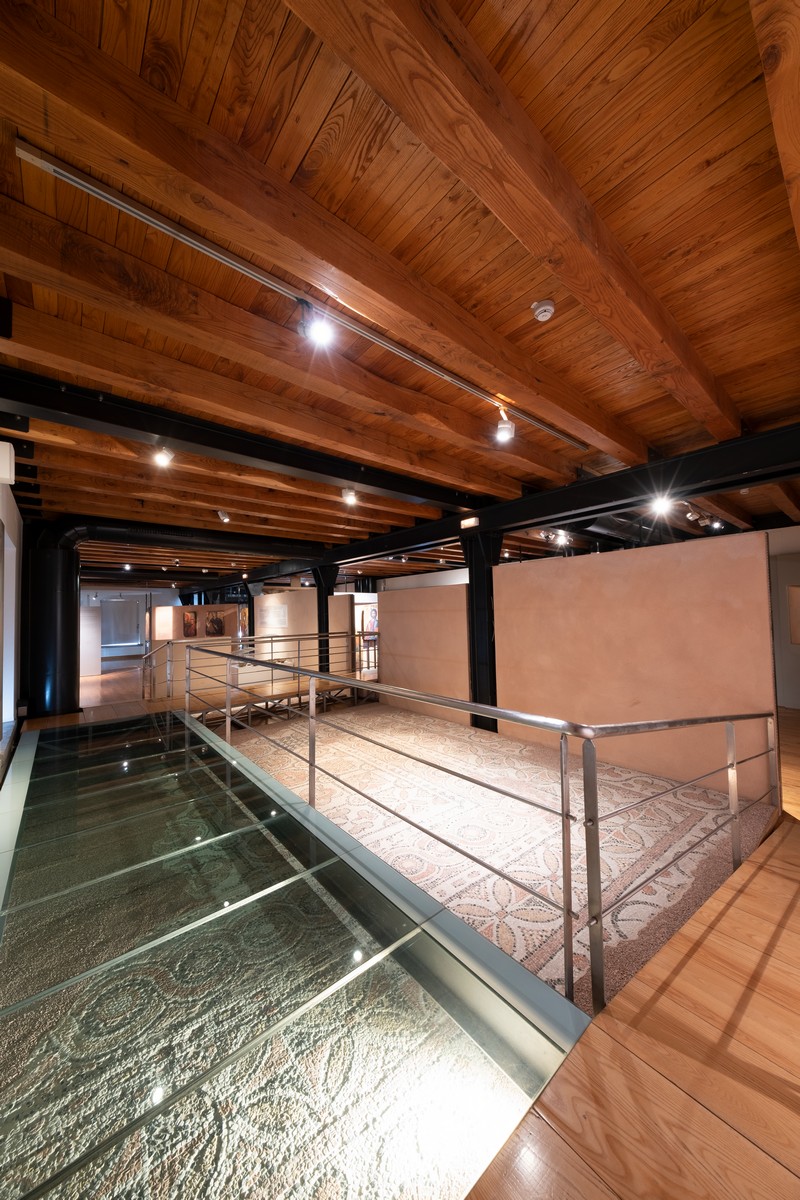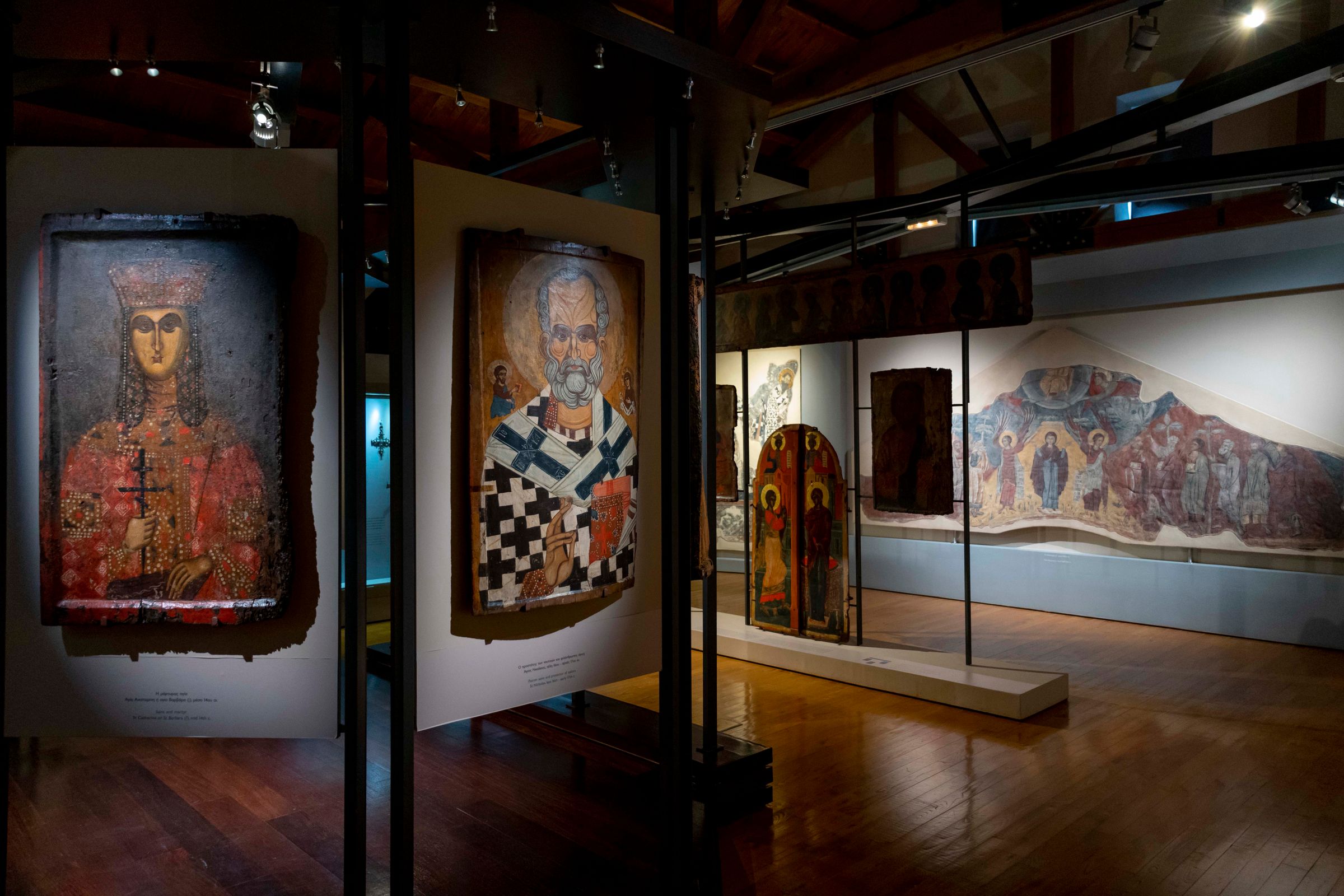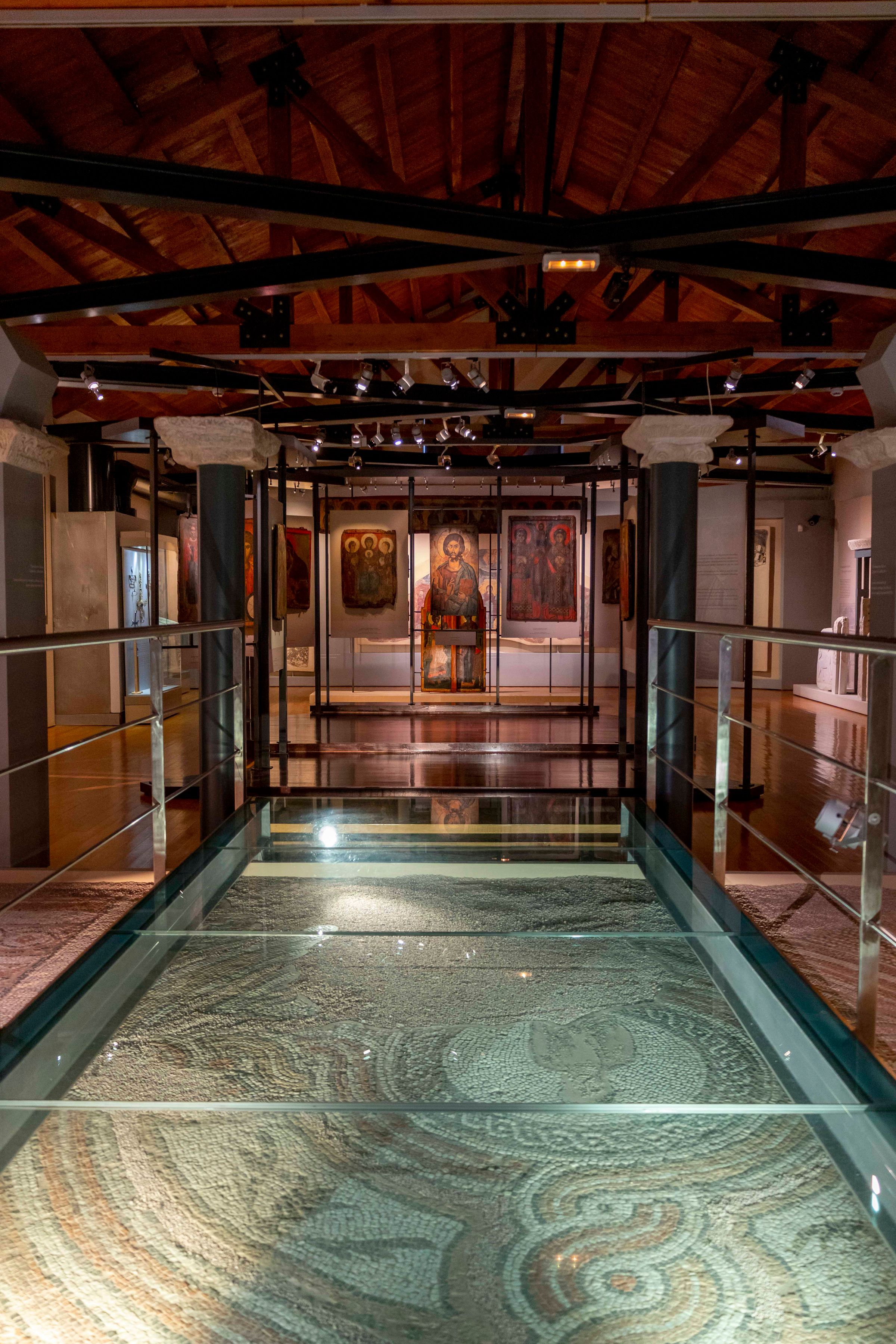
Byzantine Museum of Veria
Byzantine Museum of Veria
Centuries history in a flour mill
The Byzantine Museum of Veria is housed in an impressive, preserved industrial building from 1911, known as Markos Mill, located in the traditional Kyriotissa neighborhood, near the ancient city walls.
The exhibitions span three floors with a total area of 720 square meters, each floor highlighting a different thematic section. The permanent collection includes portable icons, frescoes, mosaic floors, architectural sculptures, marble inscriptions, pottery and small craftworks, as well as coins, manuscripts, and funerary artifacts.
This rich collection reflects the vibrant history of Veria and confirms its status as a regional Metropolis of the Byzantine Empire in Macedonia.









